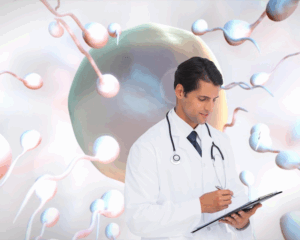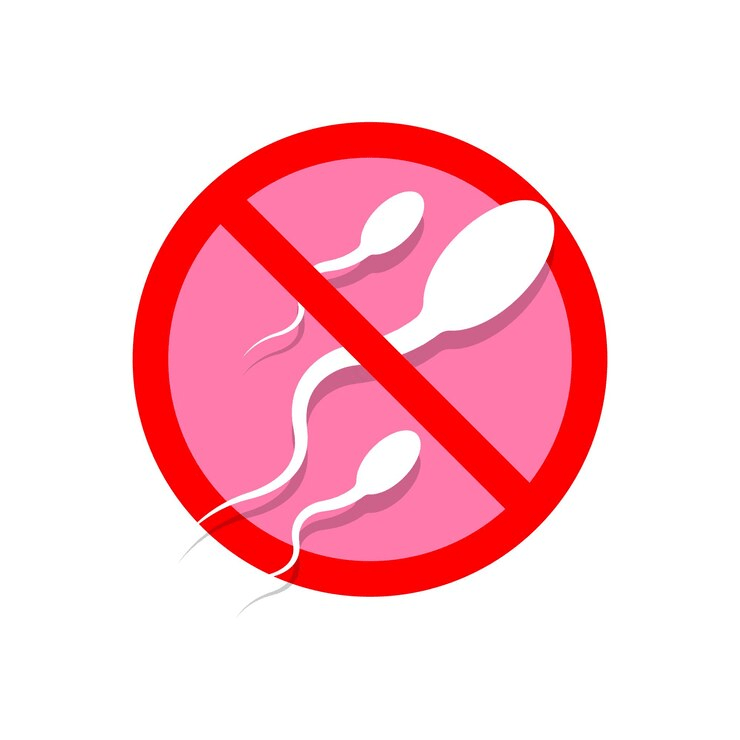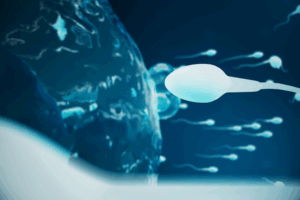
Gene therapy for azoospermia treatment
Introduction Male infertility, especially caused by azoospermia, affects millions of men worldwide. For those suffering from non-obstructive azoospermia, treatment options have been limited. However, thanks

Can non obstructive azoospermia be cured? It’s a heartbreaking question many couples face when dealing with male infertility. Non obstructive azoospermia (NOA) is a condition where the testicles fail to produce sperm, resulting in a zero sperm count in the ejaculate. While the diagnosis can feel like a dead end, medical advancements today offer hope.
This blog will guide you through everything: what causes NOA, how it’s diagnosed, and—most importantly—what treatments are available and whether a cure is possible. You’ll also learn about real fertility options and steps you can take to increase your chances of becoming a father.
Azoospermia refers to the complete absence of sperm in a man’s ejaculate. There are two main types:
Obstructive Azoospermia (OA): Where sperm is produced normally but blocked from release.
Non Obstructive Azoospermia (NOA): Where sperm is not produced at all or in extremely low amounts due to testicular failure.
Men with NOA often don’t experience any symptoms until they try to conceive. Despite this, some men may have low testosterone, small testicles, or sexual health issues. But often, the condition remains hidden until a fertility evaluation is done.
Knowing the underlying cause helps answer whether NOA can be cured or managed. Common causes include:
Klinefelter syndrome (47, XXY): One of the most common causes. It results in small testicles and hormonal imbalance.
Y chromosome microdeletions, especially in the AZF region—AZFa, AZFb, and AZFc—are responsible for sperm production.
Other mutations include gene defects affecting sperm development.
Low FSH, LH, or testosterone levels can indicate problems in the hypothalamic-pituitary-gonadal axis.
Pituitary tumors or medications (e.g., steroids, testosterone therapy) may contribute.
Chemotherapy and radiation can destroy sperm-producing cells.
Testicular surgery or trauma may damage tissues responsible for sperm production.
Dilated veins around the testes may impair sperm production and cause oxidative stress.
If not corrected early, this can affect testicular development and sperm formation.
A full evaluation is essential to distinguish NOA from other forms of infertility.
The starting point. A confirmed zero sperm count after two tests taken a few weeks apart raises the alarm.
High FSH may indicate testicular failure.
Low testosterone or LH can point to hormonal causes.
Checks for chromosomal abnormalities like Klinefelter syndrome or Y chromosome microdeletions.
Detects varicocele, tumors, or anatomical issues.
This is often the gold standard. Doctors use it to:
Examine testicular tissue under a microscope.
Detect hidden pockets of sperm production.
Now, let’s address the main question: Can non obstructive azoospermia be cured?
The answer depends on what is causing it:
Hormonal imbalances: If NOA is due to low hormone production (like in hypogonadotropic hypogonadism), hormone therapy can restore sperm production.
Varicocele-related NOA: Surgery (varicocelectomy) can sometimes restore sperm in the ejaculate.
Lifestyle-related NOA: Stopping anabolic steroids, reducing stress, and improving nutrition can help in mild cases.
Genetic causes like AZFa or AZFb microdeletions are usually not treatable.
Sertoli cell-only syndrome: When testicular tissue shows no sperm-producing cells.
Post-chemotherapy or radiation damage: Often permanent.
So, while a complete natural cure is rare, the good news is that modern medical techniques can retrieve sperm directly from the testicles, enabling biological fatherhood through assisted reproduction.
Used when there’s a hormonal cause. Includes:
Clomiphene citrate – Boosts FSH and LH.
hCG & FSH injections – Used in men with low gonadotropins.
Aromatase inhibitors – Reduce estrogen levels to boost testosterone.
Hormonal therapy may take 4–12 months before effects are seen.
Varicocele surgery can improve testicular temperature and blood flow. In select NOA patients, sperm may appear in the ejaculate within 6–12 months after surgery.
A precise surgical technique that searches for sperm-producing regions under a microscope. It’s more effective than standard TESE and minimizes testicular damage.
Success rate: 40–60% in men with NOA (depends on the pathology)
The sperm retrieved is used for Intracytoplasmic Sperm Injection (ICSI), a form of IVF.
If sperm is retrieved, it is frozen for future IVF/ICSI cycles to avoid repeat surgery.
A widely accepted option, though it doesn’t offer genetic connection. However, it allows couples to experience pregnancy and birth.
Many couples explore adoption when other treatments fail. It is a fulfilling way to become parents.
In cases where both male and female infertility issues exist, surrogacy using donor sperm or retrieved sperm is an option.
| Treatment Method | Average Success Rate |
|---|---|
| Hormonal therapy (select cases) | 30–60% improved sperm count |
| Varicocelectomy (if applicable) | 20–40% sperm return to semen |
| Micro-TESE sperm retrieval | 40–60% |
| IVF/ICSI with retrieved sperm | 25–45% live birth per cycle |
Keep in mind, each case is different. Some men respond well to treatments, while others may not see improvements. Early diagnosis, proper evaluation, and expert guidance are crucial.
Even if you can’t cure NOA completely, you can optimize fertility with these steps:
✅ Quit smoking, alcohol, and drugs
✅ Avoid overheating (hot tubs, saunas, tight underwear)
✅ Exercise moderately
✅ Sleep 7–8 hours
✅ Eat antioxidant-rich foods (fruits, nuts, leafy greens)
✅ Take fertility supplements (vitamins C, D, zinc, CoQ10, etc.)
✅ Limit exposure to toxins (plastics, heavy metals, pesticides)
These won’t “cure” severe NOA, but they can improve testicular function and assist treatments like TESE or hormone therapy.
So, can non-obstructive azoospermia be cured?
✔ Sometimes, yes—especially in hormonal and varicocele-related cases.
✔ Even when a cure isn’t possible, sperm can often be retrieved for IVF.
✔ With the right care and support, biological fatherhood is still within reach.
It’s essential to work with a reproductive urologist who specializes in male infertility. Accurate diagnosis, advanced treatment options, and realistic expectations are the key to finding the best path forward.
You are not alone, and your journey doesn’t end with a diagnosis. With the right approach, many men with NOA have gone on to build families of their own.
Need expert help?
Consult a male fertility specialist today or explore fertility centers with experience in NOA treatment and micro-TESE procedures.

Introduction Male infertility, especially caused by azoospermia, affects millions of men worldwide. For those suffering from non-obstructive azoospermia, treatment options have been limited. However, thanks

Azoospermia is one of the most challenging causes of male infertility, often leaving men with few options and couples struggling to conceive. But today, an
PROLISTEM® is a Patented Formula
Copyright © 2025 Prolistem®